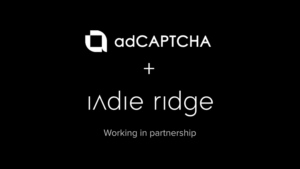Partner Content
By Charlotte Wootton, Account Director, Picnic Media
Contextual advertising has become one of the most promising lifeboats for those expecting to have to abandon the listing ship of ID-driven marketing. It has a reassuringly sturdy feel, carrying the hint of a return to traditional advertising craftsmanship, combined with the promise of AI cleverness in the engine.
But how much do we really know about the contextual advertising lifeboat? A lot rests on contextual, and many people will claim they have it mastered. But in order to separate the facts from the hype, it is important to define exactly what contextual really entails, and where we are with it right now.
In the simplest terms, contextual means analysing the data on a web page in real time to establish whether it is relevant to – and safe for – a specific advertiser, then serving ads on that basis.
Many people’s first assumption is that contextual inevitably relates to words on the digital page, and keyword targeting. But, partly due to the limitations of keywords, it has quickly become apparent that contextual needs to be a much broader science, drawing insight from location, device, time of day, and even – in the hands of companies such as GumGum – audio, video and images.
The problem with keyword targeting
There is an over-dependence in most contextual tools on keyword targeting, and of a crude kind. Contextual in this form is often based solely on the URL string, not the full page content – largely because it is incredibly hard to understand all the content on a page.
Language is complex and riddled with ambiguity, nuance and metaphor. How, in that tangled landscape, do we begin to nail down the question of sentiment? Multi-use words such as ‘shoot’, ‘knife’ and ‘dead’ have quickly become famous examples of why contextual needs more than one-dimensional keyword recognition if it is to flourish.
What’s more, even if you can understand exactly what a page is saying, in real time, how do you start the task of generating the necessary keywords and contexts to enable accurate and meaningful targeting?
However, that doesn’t mean no-one is meaningfully pushing the boundaries of contextual.
AI and machine learning
Artificial intelligence – and its algorithmic discipline, machine learning – appear to be a prerequisite for the kind of sophistication real contextual targeting requires, and they are beginning to provide some robust solutions.
Take Mantis, part of British newspaper group Reach, which uses technology powered by IBM Watson to analyse sentiment on page. Initially launched as a brand safety tool, Mantis is integrated into a publisher’s content system and is capable of understanding mentions of people, places and events, and whether content is positive, negative, happy, angry or sad. It claims to have freed up at least 70% of the content blocked by keyword targeting tools around terms like ‘COVID-19’ and ‘coronavirus’.
Enhanced contextual
Equally compelling is the work of programmatic media companies such as MiQ to develop ‘enhanced contextual’. This method of audience-building takes its inputs from the contextual space, instead of the authenticated identity space – finding high-performing combinations such as, for example, domains and postcodes, then enriching them to predictively model out more in the same mould.
Social context
At Picnic, we’re building a tool of our own to understand page content and generate relevant contextual groups based on the data drawn from social networks. Networks such as Instagram and Twitter can be understood as ‘interest graphs’, naturally occurring ways of linking different relevant topics, on the basis that we all actively compile defining information about ourselves through those we follow.
Using this modern natural resource, we can enrich editorial content with ‘social context’, associating it with relevant usernames, hashtags and topics from social networks. We think this represents a radical new way of categorising editorial content, not least because it exports the targeting options of, say, Twitter, to the open web.
In developments like these, we can see the meaningful future of contextual taking shape. Even as it does, we suspect the market will have to chew through numerous underwhelming offerings that provide a flavour of contextual without solving any of its inherent problems or adding any of the necessary magic ingredients.
Fundamentally, contextual targeting must now be defined as more than just keyword targeting. But on the basis of what we are beginning to see from less invasive and data-driven contextual solutions to engage audiences, we believe contextual will play a huge role in the post-GDPR world.












